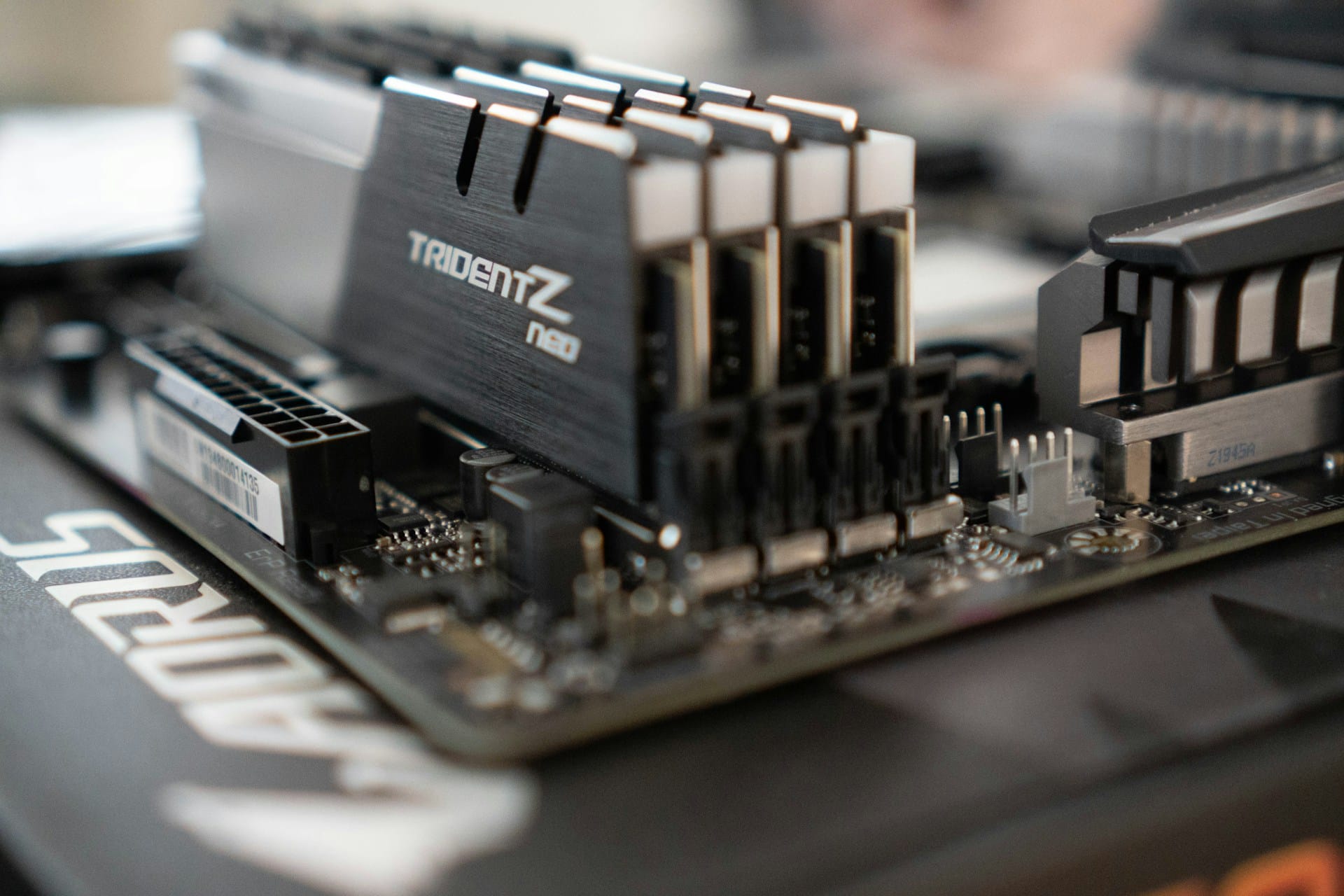In the world of computing, memory plays a fundamental role in the functioning of systems. Computers use different types of memory to store and manage data, each with specific characteristics and applications. In this article, we will explore the main types of memory used in computers: RAM, ROM, PROM, EPROM; and EEPROM, explaining what they are and how they differ.
1. RAM (Random Access Memory)
RAM is the random access memory, and it is one of the most important components in a computer. It is a type of volatile memory, meaning it only stores data while the system is powered on. When the computer is turned off, all data in the RAM is lost.

Key Features:
- Fast Access: RAM allows reading and writing data at very high speeds, making it essential for the smooth functioning of the system.
- Temporary Storage: It is used to store data and programs that are actively in use, such as the operating system, open applications, and temporary files.
- Types of RAM: There are different types, such as DRAM (Dynamic RAM) and SRAM (Static RAM), which vary in speed and cost.
Main Differences:
- It is volatile, unlike ROM.
- It allows both reading and writing of data.
2. ROM (Read-Only Memory)
ROM is read-only memory. It is a type of non-volatile memory, meaning it retains data even when the system is turned off. ROM is primarily used to store firmware, such as a computer’s BIOS, which is essential for system booting.
Key Features:
- Permanently Stored Data: The data in ROM is pre-programmed and cannot be easily modified.
- Used in Firmware: It is used to store critical instructions that should not be altered, such as those necessary for starting up the system.
- Non-volatile: It does not require power to maintain the stored data.
Main Differences:
- It is read-only (although there are variants that allow limited writing, like PROM, EPROM, and EEPROM).
- It is non-volatile, unlike RAM.
3. PROM (Programmable Read-Only Memory)
PROM is a variant of ROM that can be programmed by the user only once. Once programmed, the data cannot be modified. Programming a PROM requires a special device called a PROM programmer.
Key Features:
- One-time Programmable: Ideal for applications where the data does not need to change, such as in certain embedded systems.
- Non-volatile: Retains data without the need for power.
- Less Flexible: It is not possible to rewrite the data.
Main Differences:
- It is a programmable ROM, but only once.
- It is more economical than other reprogrammable memories like EPROM or EEPROM.
4. EPROM (Erasable Programmable Read-Only Memory)
EPROM is programmable and erasable read-only memory. Unlike PROM, EPROM can be rewritten, but this requires exposing it to ultraviolet light through a quartz window in its package.

Key Features:
- Rewritable: Data can be erased and reprogrammed, though the erasing process is slow and requires specialized equipment.
- Non-volatile: Retains data without power.
- Useful in Prototyping: It is useful in applications where firmware needs to be modified, but not frequently.
Main Differences:
- Allows rewriting, but with a complex erasing process.
- More flexible than PROM, but less than EEPROM.
5. EEPROM (Electrically Erasable Programmable Read-Only Memory)
EEPROM is electrically erasable programmable read-only memory. It is similar to EPROM, but allows for erasure and reprogramming using electrical pulses, eliminating the need for ultraviolet light.
Key Features:
- Electrically Rewritable: It can be modified without being removed from the system, making it more convenient than EPROM.
- Non-volatile: Maintains data without power.
- Used in Configurations: It is used in applications that require storage of data that may change occasionally, such as device settings.
Main Differences:
- Allows easier erasure and reprogramming than EPROM.
- More expensive than EPROM but more practical for applications that require frequent updates.
Summary Comparison
| Feature | RAM | ROM | PROM | EPROM | EEPROM |
|---|---|---|---|---|---|
| Volatility | Volatile | Non-volatile | Non-volatile | Non-volatile | Non-volatile |
| Access | Read and write | Read-only | Programmable once | UV erasable | Electrically erasable |
| Speed | Very fast | Slow | Slow | Slow | Slow |
| Main Use | Temporary data | Firmware | Fixed data | Modifiable firmware | Modifiable configurations |
Conclusion
Each type of memory serves a specific function in a computer. RAM is essential for system performance by allowing fast access to data in use. ROM and its variants (PROM, EPROM, and EEPROM) are crucial for storing permanent or semi-permanent information, such as firmware and configurations. The choice between them depends on the system’s needs, such as data update frequency and required volatility.

